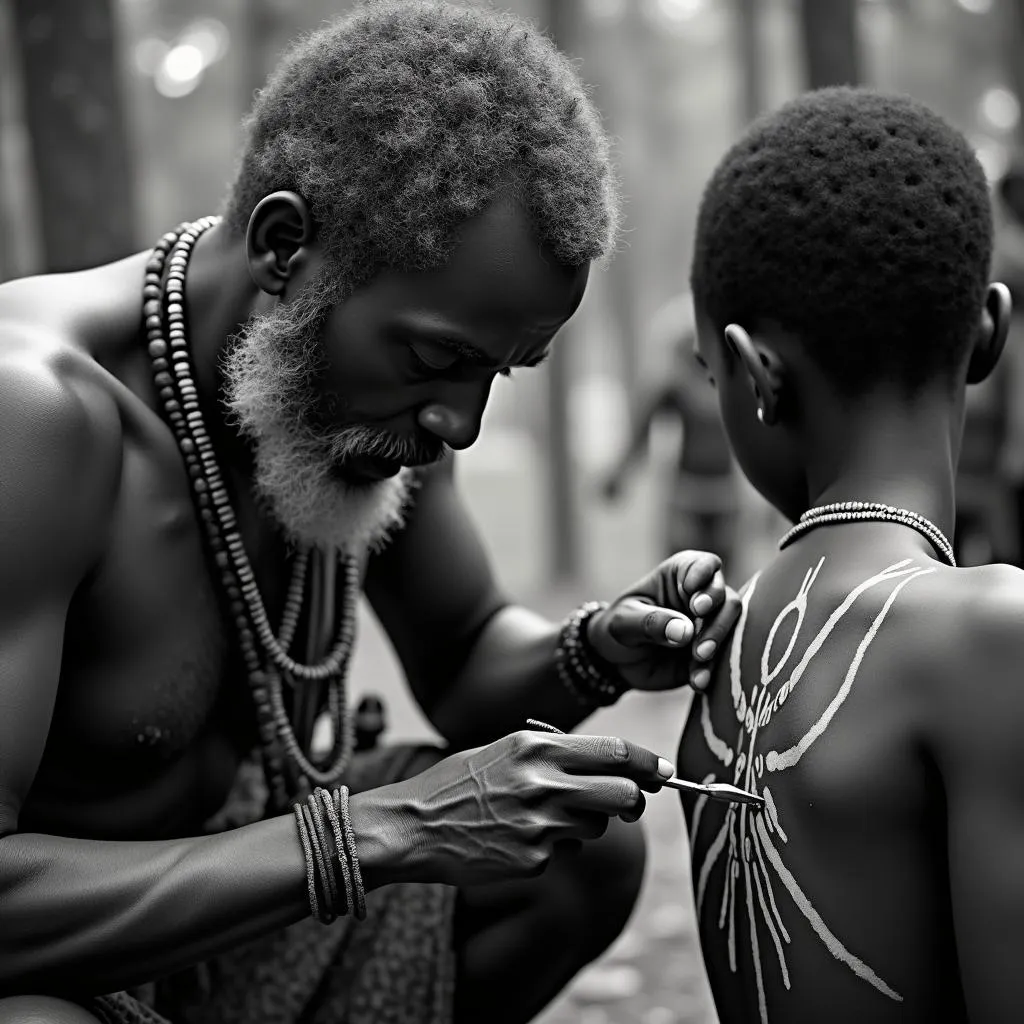African Babies with Blue Eyes: Unveiling the Beauty of Rare Genetics
African babies with blue eyes, particularly twins, are a captivating sight, a mesmerizing blend of continental heritage and rare genetic traits. While brown eyes are the norm across Africa, a small percentage of the population possesses the gene responsible for blue eyes, challenging conventional perceptions and showcasing the continent’s diverse gene pool.
The Science Behind Blue Eyes in African Babies
The color of our eyes is determined by the amount and type of melanin, a pigment, present in the iris. Brown eyes, the most common globally, result from high melanin levels. Blue eyes, however, are a result of a genetic variation that reduces melanin production.
This gene, known as OCA2, plays a crucial role in melanin synthesis. A specific mutation in this gene leads to less melanin in the iris, scattering light and creating the blue hue. This doesn’t mean the iris lacks melanin entirely; it simply means the levels are significantly lower.
 Two African twin girls with striking blue eyes playing together in a sunny garden
Two African twin girls with striking blue eyes playing together in a sunny garden
Dispelling Myths: Albinism vs. Blue Eyes
It’s important to distinguish between blue eyes and albinism. Albinism is a genetic condition characterized by a complete or partial absence of melanin throughout the body, including the skin, hair, and eyes. This results in very pale skin, white hair, and often, red or pink eyes due to the visibility of blood vessels.
While some people with albinism may have blue eyes, the vast majority of African babies with blue eyes are not albino. They have normal melanin production in their skin and hair, with the genetic variation affecting only their eye color.
Cultural Significance and Beliefs
In some African cultures, babies with unique features like blue eyes are often seen as special and are believed to possess spiritual significance. They may be associated with good luck, ancestral blessings, or even mystical powers. In other communities, however, blue eyes can be met with superstition or misunderstanding.
 An African mother lovingly holding her baby with blue eyes in a traditional setting
An African mother lovingly holding her baby with blue eyes in a traditional setting
It’s crucial to remember that cultural beliefs and perceptions vary widely across the continent, and it’s important to approach these differences with respect and sensitivity.
Blue Eyes in African History: Tracing the Genetic Heritage
The presence of blue eyes in Africa can be traced back thousands of years. While the exact origins are still debated, some theories suggest that the gene responsible for blue eyes may have been introduced through ancient migrations and intermingling with populations from Europe and Asia.
Historically, North Africa has seen significant genetic exchange due to its proximity to Europe and the Middle East. This is evident in the diverse physical features observed in North African populations, including a higher prevalence of lighter eye colors compared to other regions of the continent.
Embracing Diversity: Celebrating Unique Beauty
African babies with blue eyes are a testament to the continent’s rich genetic diversity and the complex tapestry of human evolution. They challenge our preconceived notions of beauty and remind us that the human genome is a vast and ever-evolving mosaic.
It’s essential to celebrate and embrace the diversity of human features, recognizing that every individual, regardless of their eye color, deserves respect and admiration.
Conclusion: The Allure of Blue Eyes in Africa
African babies with blue eyes are a beautiful reminder of the genetic variations that make us unique. Their striking appearance sparks curiosity and invites us to explore the fascinating science and cultural beliefs surrounding this rare trait.
As we continue to unravel the mysteries of human genetics, it’s crucial to approach differences with respect, understanding, and a deep appreciation for the diversity that makes our world so extraordinary.
FAQ
1. Are all African babies with blue eyes albino?
No, the vast majority of African babies with blue eyes are not albino. Albinism is a separate genetic condition that affects melanin production throughout the body, while blue eyes result from a specific gene mutation that reduces melanin only in the iris.
2. What are the cultural beliefs surrounding blue eyes in Africa?
Cultural beliefs vary widely across the continent. In some communities, blue eyes are seen as a sign of good luck or ancestral blessings, while in others they may be met with superstition or misunderstanding.
3. How did the gene for blue eyes appear in African populations?
The exact origins are still debated, but theories suggest that the gene may have been introduced through ancient migrations and intermingling with populations from Europe and Asia.
4. Are blue eyes more common in certain regions of Africa?
Historically, North Africa has seen more genetic exchange with Europe and the Middle East, resulting in a higher prevalence of lighter eye colors, including blue, compared to other regions of the continent.
5. Why is it important to embrace diversity in human features?
Celebrating and embracing diversity in human features, including eye color, fosters respect, understanding, and appreciation for the uniqueness of each individual.
 Two African twin girls with blue eyes smiling brightly at the camera
Two African twin girls with blue eyes smiling brightly at the camera
Need More Information?
For more information on African culture, heritage, and the fascinating world of genetics, please contact us:
Phone Number: +255768904061
Email: [email protected]
Address: Mbarali DC Mawindi, Kangaga, Tanzania
Our dedicated team is available 24/7 to assist you.


